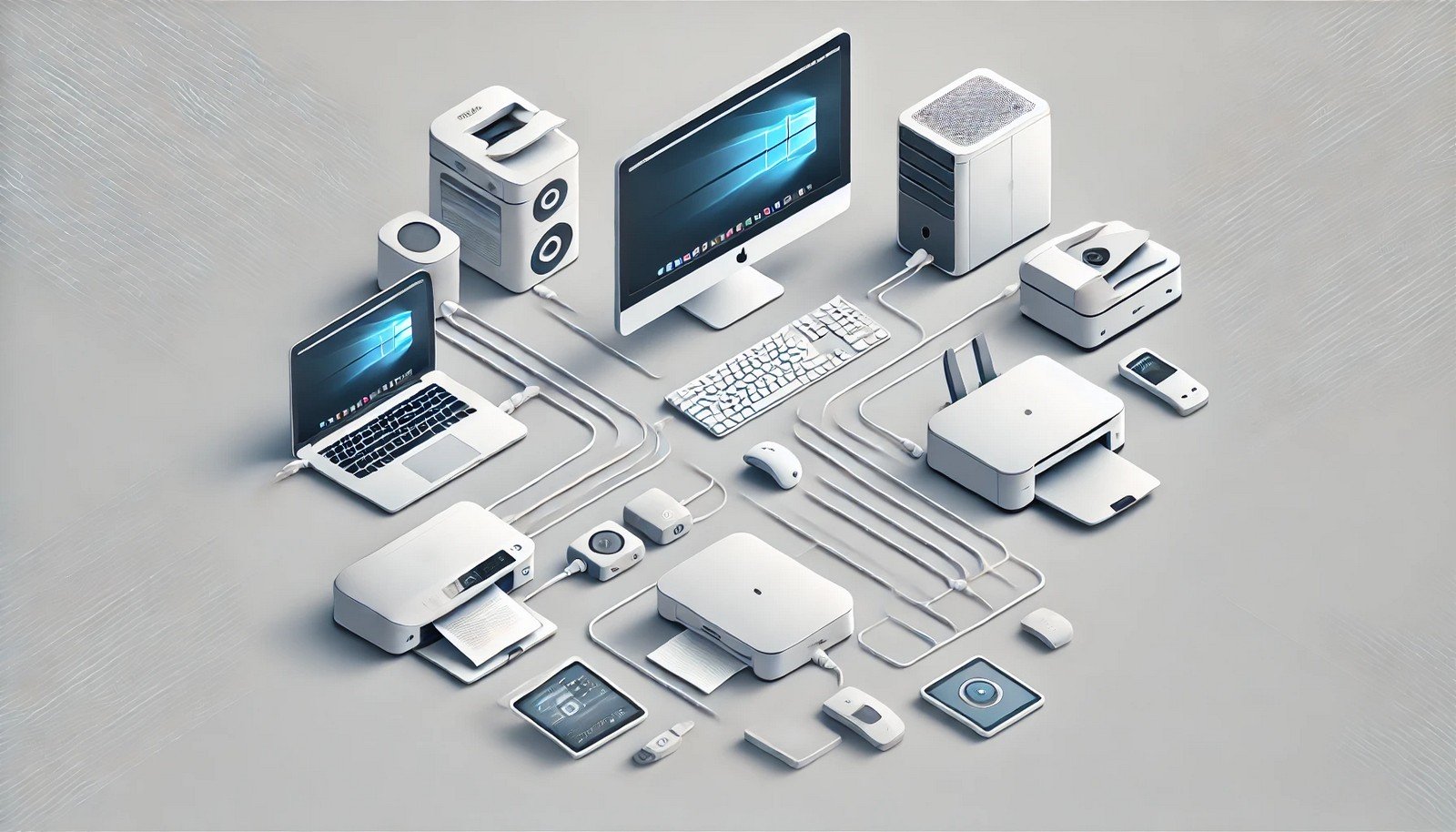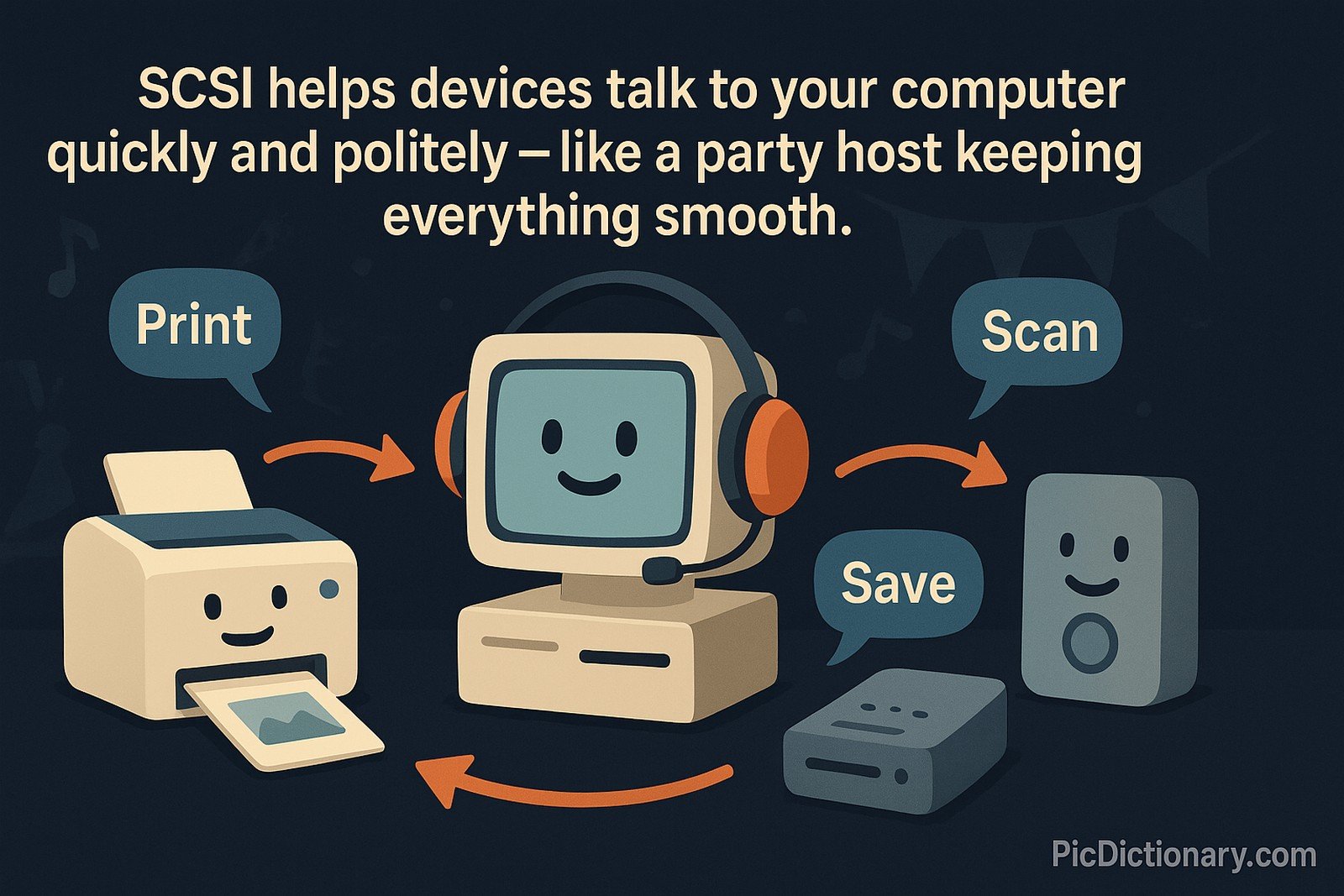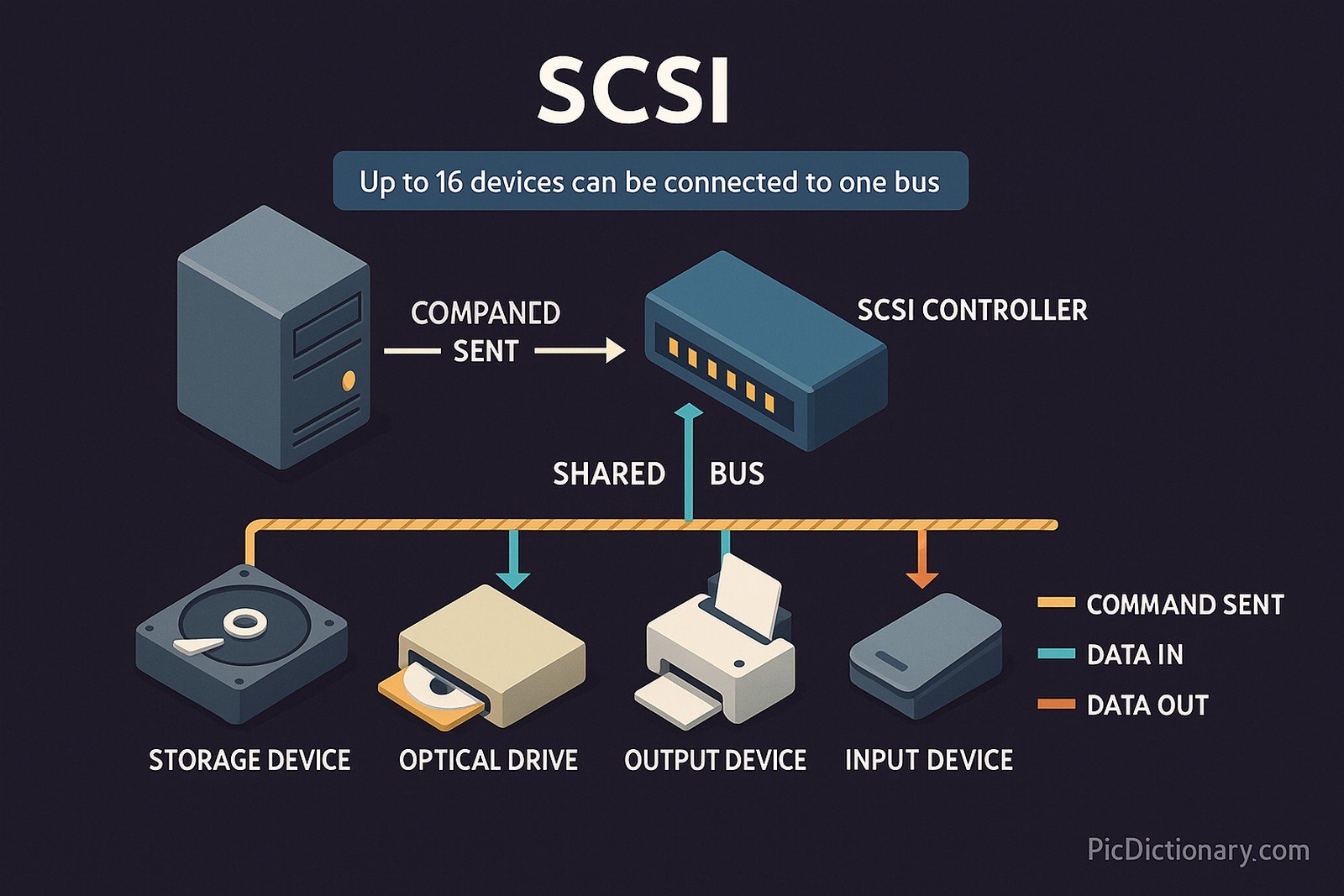SCSI (Small Computer System Interface)
 (Representational Image | Source: Dall-E)
(Representational Image | Source: Dall-E)
Quick Navigation:
- SCSI Definition
- SCSI Explained Easy
- SCSI Origin
- SCSI Etymology
- SCSI Usage Trends
- SCSI Usage
- SCSI Examples in Context
- SCSI FAQ
- SCSI Related Words
SCSI Definition
SCSI (Small Computer System Interface) is a set of standards for connecting and transferring data between computers and peripheral devices. It supports multiple devices connected to a single bus, allowing devices such as hard drives, scanners, printers, and CD-ROM drives to communicate with the computer system. SCSI operates with faster data transfer rates and provides more flexibility than simpler interfaces. It uses command-based communication and can support up to 16 devices on one bus, offering scalability and efficient multitasking, making it popular in enterprise storage and server environments.
SCSI Explained Easy
Imagine your computer has a bunch of friends (like a printer, scanner, and hard drive), and they all want to talk to your computer. SCSI is like a party host that helps everyone talk one at a time, really quickly and politely, without getting confused. It helps these devices send and receive messages so your computer knows what to do, like printing a picture or saving a file.
SCSI Origin
SCSI was first developed in the early 1980s by Shugart Associates, which later became part of Seagate Technology. It was based on the earlier SASI (Shugart Associates System Interface) and was standardized by the American National Standards Institute (ANSI) in 1986, becoming widely used in professional and high-performance computing environments.
SCSI Etymology
The term “SCSI” was coined from the predecessor SASI. The letters themselves became associated with flexibility and performance in peripheral device communication.
SCSI Usage Trends
While SCSI was dominant in high-end workstations, servers, and storage systems throughout the 1980s and 1990s, its usage has gradually declined with the rise of interfaces like USB, SATA, and NVMe for consumer devices. However, SCSI concepts and protocols live on in enterprise environments and storage technologies such as SAS (Serial Attached SCSI) and iSCSI (Internet SCSI).
SCSI Usage
- Formal/Technical Tagging:
- Computer Hardware
- Data Transfer Protocols
- Peripheral Interfaces - Typical Collocations:
- "SCSI bus"
- "SCSI controller"
- "SCSI command"
- "SCSI device"
- "external SCSI drive"
SCSI Examples in Context
- The server uses a SCSI controller to manage multiple high-speed drives.
- A SCSI cable connected the scanner to the workstation for efficient image processing.
- Enterprise storage systems often rely on SCSI protocols for robust data transfer.
SCSI FAQ
- What does SCSI stand for?
Small Computer System Interface. - How many devices can SCSI connect?
It can connect up to 16 devices on one bus. - Is SCSI still used today?
Yes, but mostly in enterprise systems and through protocols like SAS and iSCSI. - What replaced SCSI in consumer devices?
USB, SATA, and NVMe have largely replaced SCSI in consumer hardware. - How fast is SCSI?
Speeds range from a few megabytes per second to hundreds of megabytes in Ultra SCSI versions. - What are common SCSI devices?
Hard drives, CD-ROMs, scanners, and tape drives. - Can SCSI devices be daisy-chained?
Yes, multiple SCSI devices can be daisy-chained on a single bus. - Is SCSI plug-and-play?
Not typically; configuration often involves setting device IDs and termination. - What’s the difference between SCSI and SAS?
SAS is a newer, faster serial implementation of the SCSI protocol. - What is iSCSI?
iSCSI allows SCSI commands to be transmitted over IP networks for remote storage access.

SCSI Related Words
- Categories/Topics:
- Computer Hardware
- Data Communication
- Peripheral Connectivity
- Storage Solutions
Did you know?
NASA used SCSI interfaces in space missions to connect data collection instruments to onboard computers, valuing its reliability and robust communication in critical systems.
PicDictionary.com is an online dictionary in pictures. If you have questions or suggestions, please reach out to us on WhatsApp or Twitter.Authors | Arjun Vishnu | @ArjunAndVishnu

I am Vishnu. I like AI, Linux, Single Board Computers, and Cloud Computing. I create the web & video content, and I also write for popular websites.
My younger brother, Arjun handles image & video editing. Together, we run a YouTube Channel that's focused on reviewing gadgets and explaining technology.



Comments powered by CComment